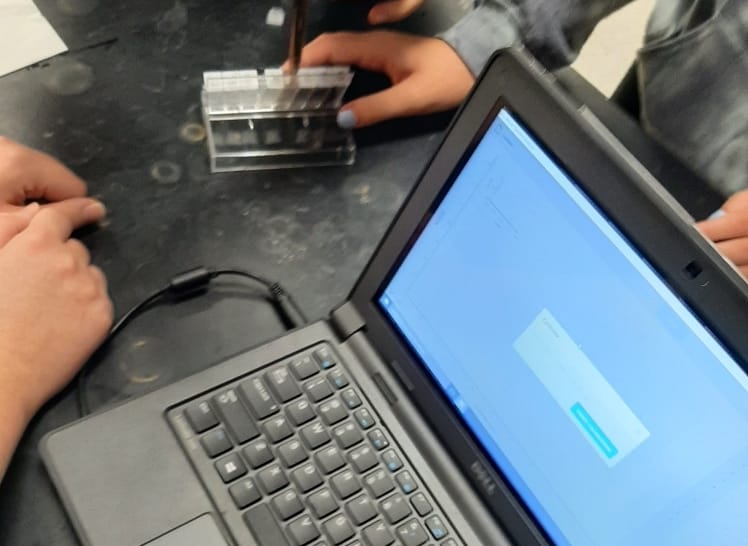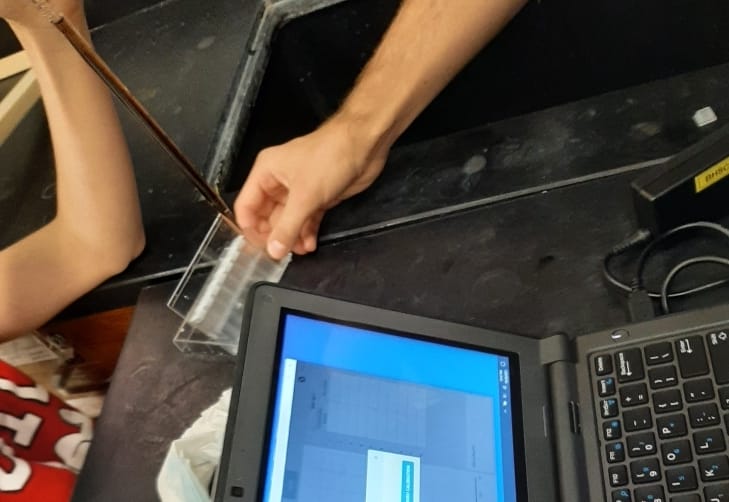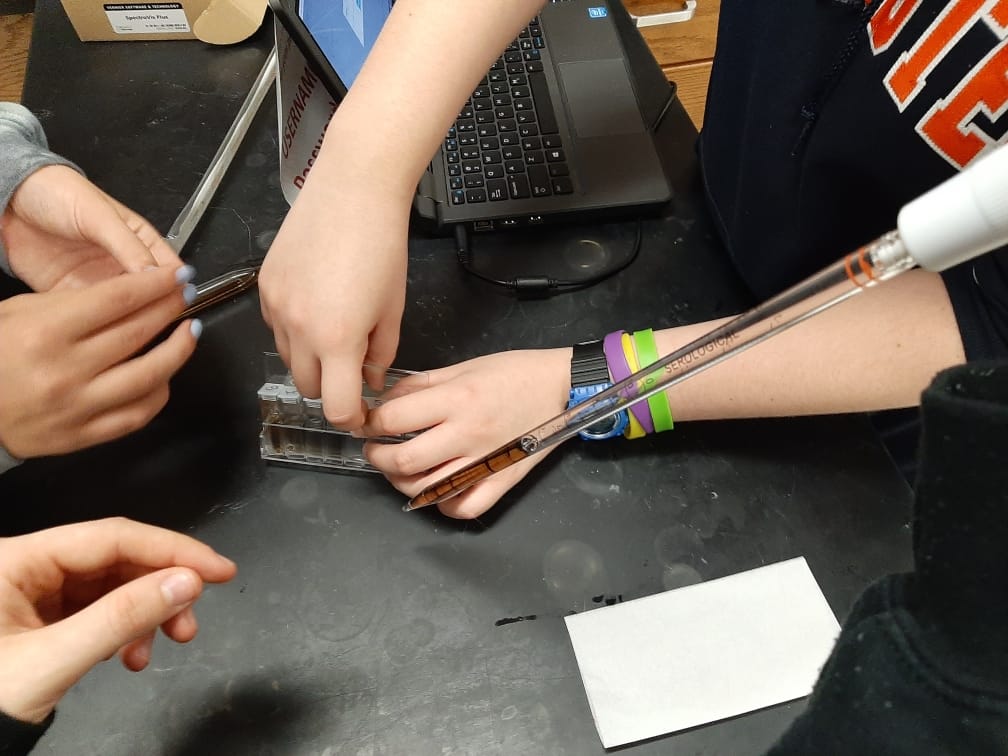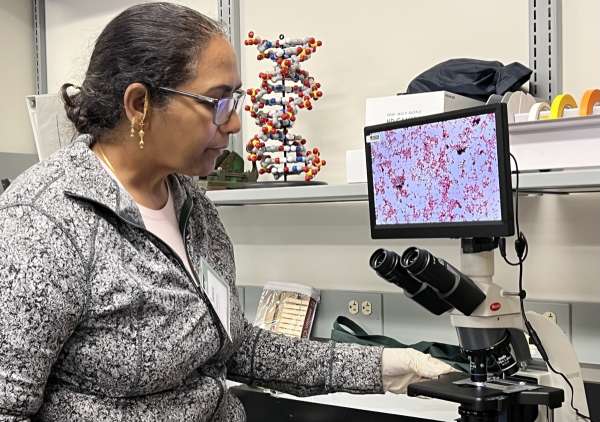Looking for an interesting way to connect the science topics you need to cover with real-world applications? Tami Golliday found just that in a BioRad activity from the Ag Med Biotech Graduate Academy, held this summer at Otterbein University.
The Got Protein? lab is an Inquiry-based activity that integrates biology, chemistry, and physics in relation to protein structure and function. Students are introduced to proteomics and can develop their own protein-based experiments. Assay results can be measured qualitatively by eye or quantitatively with a spectrophotometer.

Golliday received this BioRad kit after attending the workshop. “The experiment went great. My students genuinely enjoyed using a topic they are required to learn in an experiment with actual applications in the real world to solve problems,” Golliday said.
They rotated through 10 stations, pipetting the 20 𝜇L of each standard and samples into the cuvettes and capping them with the labeled lids. They then returned to their own lab stations. Golliday provided them with 15 mL of the 1x dye solution, a 1 mL serological pipette, and a pipeter. They added 1 mL of dye solution to each cuvette capped, and then mixed each to combine the standard and dye. During the 5-minute wait time, students set up the computers and vernier spectrophotometers and used the vernier software for spectral analysis.

The students calibrated using the blank with 1x PBS solution and 595 nm to make the standard curve. The absorbance for the samples was measured and the equation for the standard curve and the r-squared value determined. Then the concentrations for the samples was determined.
“One of the extensions for the activity stated that human tears could be tested and they really wanted to do that. There is a standing joke in my class that we cry a lot learning this stuff because it is so difficult sometimes! However, today was not one of these days. When we took the test on Beer’s law the next day, I had the highest scores in my career for the topic. This lab really engaged them and made the learning process not feel like work.
One change I would make next year is have them calculate the concentration of the standards into molarity and enter that for their standard curves to mirror the questions they are expected to answer for the AP exam,” Golliday said.
“The biggest highlight of the workshop was using biotech methods in AP chemistry. Many of my students wish to be doctors or researchers. This lab engaged their interest more than the ordinary AP labs suggested by the College Board.”





Share this